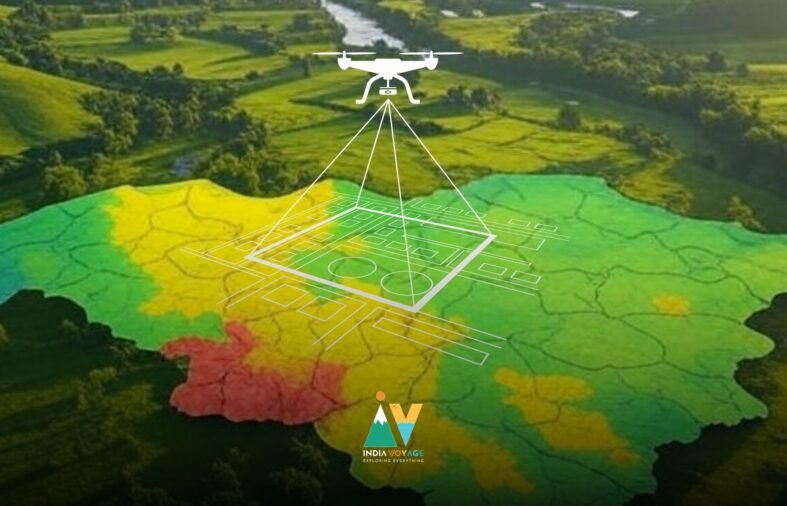India’s cinematic landscape has been transformed by drones, enabling filmmakers and content creators to capture stunning aerial perspectives for movies, commercials, and digital media. Yet, this creative freedom comes with strict regulations, particularly the prohibition on flying drones in red zones without authorization. Many cinematic drone pilots, especially those new to the field, may overlook the critical need for situational awareness, risking safety and legal consequences. This article delves into why understanding airspace restrictions and maintaining vigilance is essential for responsible drone operation in India.
India’s Drone Regulations: A Snapshot
The Directorate General of Civil Aviation (DGCA) regulates drone operations in India under the Drone Rules, 2021. These rules categorize airspace into three zones:
- Green Zones: Areas where drones can fly without special permission, provided they adhere to limits like a 400-foot altitude ceiling and avoid restricted sites.
- Yellow Zones: Regions requiring approval via the DigitalSky platform before flight.
- Red Zones: Highly restricted areas, such as those within 5 km of airports, near borders, or around military facilities, where flying is banned without central government clearance.
The No Permission, No Takeoff (NPNT) policy mandates that drones over 250 grams obtain flight approval through DigitalSky, which verifies compliance with airspace rules. Nano drones (under 250 grams) used non-commercially are exempt from NPNT but must still steer clear of red zones unless permitted.
Why Situational Awareness Is Non-Negotiable
Situational awareness—being fully aware of your surroundings and their implications—is vital for cinematic drone pilots. Without it, pilots may inadvertently break rules or compromise safety. Here’s why it matters:
- Prioritizing Safety: Operating a drone in a red zone, like near an airport, could disrupt air traffic or sensitive operations, posing risks to manned aircraft or national security.
- Avoiding Legal Trouble: Flying without permission in restricted areas can result in hefty fines, drone seizure, or legal action. For example, a 2025 incident in Rajasthan, where unauthorized drone activity caused disruptions, led to a DGCA warning, emphasizing the need for compliance.
- Safeguarding Equipment: Cinematic shoots involve costly drones and meticulous planning. Unauthorized flights risk equipment loss or damage due to regulatory intervention or unsafe conditions.
- Enhancing Creative Output: Knowing where you can legally fly helps pilots select optimal locations, ensuring uninterrupted shoots and high-quality footage.
Challenges Facing Cinematic Drone Pilots
Novice and even seasoned pilots may struggle to navigate India’s drone regulations. Common hurdles include:
- Limited Knowledge: Some pilots are unaware of the DigitalSky platform or the NPNT requirement, leading to unintentional violations.
- Time-Intensive Permissions: Securing approvals for yellow or red zones can be complex and slow, tempting pilots to skip the process.
- Evolving Restrictions: Temporary red zones, like those enforced in Srinagar in 2024, can catch pilots off guard without regular checks.
How to Fly Responsibly
Cinematic drone pilots can ensure safe and legal operations by following these steps:
- Verify Airspace Status: Use the DigitalSky app or website to check if your filming location is in a green, yellow, or red zone. Its real-time airspace map is an invaluable tool.
- Secure Approvals: For yellow or red zones, submit a detailed flight plan via DigitalSky well in advance. Red zone permissions require central government approval, which takes time.
- Pursue Training: Pilots flying drones over 2 kg or for commercial purposes need a Remote Pilot Certificate (RPC) from a DGCA-approved school, which teaches airspace rules and safety practices.
- Monitor Updates: Stay informed about DGCA advisories and temporary restrictions. As of May 2025, the Drone Rules, 2021, remain unchanged, but pilots should check for new notices.
- Conduct Pre-Flight Checks: Assess weather, battery levels, and NPNT compliance. Ensure drones over 250 grams have a Unique Identification Number (UIN) if required.
Looking Ahead
Cinematic drone pilots are integral to India’s thriving creative sector, from blockbuster films to social media content. However, their ability to capture awe-inspiring shots depends on respecting airspace regulations. By embracing situational awareness, pilots can avoid penalties, prioritize safety, and focus on their craft.
India’s drone industry is growing, with initiatives like the Production Linked Incentive (PLI) scheme fostering innovation and local manufacturing. As opportunities expand, so does the responsibility to fly wisely. Whether shooting a cinematic masterpiece or a local vlog, the mantra remains: always check before you fly. It’s the foundation for safe, legal, and extraordinary drone cinematography.











Leave A Reply